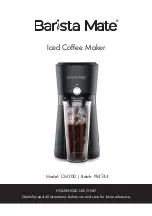
Working Method
The Ziegra chip-ice machine is delivered ready for operation and has only to be connected to power and water supply
(provide melt-water drain for machines including storage bin). No operating personnel is required.
The ice machine works fully automatically.
Water flows by gravity from the water chamber
in the ice machine into the freezing cylinder.
An evaporating coil (with ozone friendly refrigerant
R 404 A) surrounds the cylinder freezing the water
inside at an evaporation temperature
of -12° C up to -18°C.
An auger continuously scrapes thin layers of ice
from the inner cylinder wall and conveys it upwards.
There the ice is compacted, frozen further
and subsequently broken off.
By this procedure the refrigeration energy can freeze the following water without loss.
(If the ice layer would become 1 or 2 mm thick, an unnecessary amount of energy would
have to be used for freezing due to the high insulating capacity of ice.)
The ideal ice thickness of 6 - 7 mm
at low energy consumption can be achieved
thanks to the idea of subsequently compacting the ice.
The ice being frozen on the inner wall of the cylinder, the refrigeration system of Ziegra chip-ice machines
is completely sealed. The rotating auger does not form part of the refrigeration circuit.
Therefore leakages in the refrigeration system caused by rotating parts cannot occur.
The ideal ice temperature is -0,5° C
Ziegra chip-ice has the ideal temperature of -0,5° C. It is irregular and crystalline in structure and always stays loose.
In contrast with other types of ice it can be stored without being sub-cooled and never freezes up.
Ziegra chip-ice is frozen within the patented freezing cylinder at an evaporation temperature of -12° C up to -18° C.
Due to the special procedure maximum refrigeration capacity is obtained at a very low energy consumption.
Cooling energy:
The uninterruped line shows the accumulated energy per kg of
ice (refrigerating energy). Only when ice having a temperature of
0° C melts to water of 0°C, the considerable refrigeration capacity
of ice is released (vertical line). The cooling capability of water
is lower (left line), ice of low temperatures does hardly cool at all
(right line).
The cooling capacity of water per °C is
(left line)
1 Kcal / kg,
Ice temperatures below 0° C give only
0,5 Kcal / kg.
Energy consumption:
The broken line shows the minimum electric energy consumption
necessary for every ice production.
Up to an ice temperature of 0° C energy input and the
refrigerating energy produced are closly correlated.
Only when ice is unnecessarily cooled to temperatures
below 0° C, the energy required rises disproportionately.
1
Содержание ZBE 30
Страница 9: ...Refrigerant and Water Circuit 8...




























